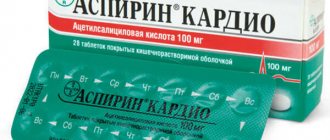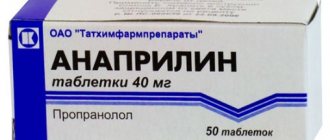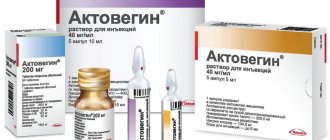What is magnesia
The drug is called magnesium sulfate, magnesium sulfate, Epsom salt. The medicine differs in its effect on the body, which depends on the form of release - ampoules, tablets, dry powder. Magnesia for high blood pressure is used by injection. Drug for hypertension:
- eliminates the symptoms of the disease, but does not treat the cause;
- quickly normalizes blood pressure;
- eliminates swelling - produces a diuretic effect;
- helps to avoid complications - stroke, acute heart failure;
- used as an emergency aid.
The use of medicine in the form of injections and powder for suspension, in addition to lowering blood pressure:
- normalizes heart rate;
- relieves spasms of cerebral vessels;
- ensures rapid removal of poisons from the body;
- stimulates urine output;
- eliminates nervous tension;
- dilates blood vessels;
- activates bile production;
- relieves cramps;
- calms;
- relieves pain;
- gives a hypnotic effect;
- has a laxative effect.
How to give an injection
In order to reduce pressure measurements, Magnesia is rarely prescribed intramuscularly, since this technique is ineffective. The therapeutic effect occurs slowly and does not give the expected result. Relief occurs after 1 hour. In addition, intramuscular injections are fraught with hematomas, compactions, local inflammation, and in some cases, abscesses. It is permissible to give an injection into soft tissues if the possibility of intravenous administration of the drug is excluded.
There are several rules for administering intramuscular injections of Magnesia for high blood pressure.
- Injections of this medication are painful, therefore, to minimize pain, an analgesic medication is injected into the patient before the procedure for administering the medication. Magnesia for injection can be mixed before the injection with painkillers Lidocaine or Novocaine in equal volumes.
- The container with the medicine must be warmed to a comfortable temperature (+36°C). For the injection, choose a disposable syringe with a thin needle (4 cm), the longer it is, the greater the depth of the medicine.
- You can inject Magnesia without outside help, but it is better to entrust it to a specialist. The patient is placed on the couch to achieve maximum muscle relaxation. The future injection site should be treated with medical alcohol.
- The medicine is injected into the gluteal muscle, which contains a lot of subcutaneous fatty tissue. Having mentally divided the buttock into 4 parts and selected the right upper lobe, a syringe needle is quickly inserted at a slight inclination. Then, without haste, using progressive movements of the piston, inject for 2-3 minutes, while carefully monitoring the patient’s reaction.
- After administering the drug, you should lie down for a while to avoid dizziness. For better absorption of the medicine, the injection site should be massaged with gentle movements for several minutes.
Important information: Which tablets (medicines) for high blood pressure (hypertension) are the most effective and with the least side effects for the elderly
Injections into a vein and droppers are more effective on the body when blood pressure is reduced; intravenous Magnesium should only be administered by a specialist. It is best to do this in a medical facility. The drug should not enter the blood in its pure form; it must be diluted with glucose solution or saline solution.
The drip should last at least 20 minutes, the injection 5-7 minutes. If the patient's condition worsens or negative reactions are observed in the form of confused speech, redness of the skin, increased sweating, the procedure is stopped immediately. In a favorable scenario, drip or jet injection of medication into the bloodstream makes it possible to reduce blood pressure after 15-20 minutes.
Indications for use
Magnesia in hypertensive crisis is used as emergency aid. The drug is used for numerous diseases. The medicine is prescribed in the form of a dropper, injections, oral suspension and tablets when diagnosed:
- cerebral edema;
- bronchial asthma;
- hypotonic biliary dyskinesia;
- increased sweating;
- cholecystitis;
- ventricular arrhythmia;
- magnesium deficiency in the blood;
- eclampsia;
- encephalopathy;
- severe nervous excitability;
- increased physical activity;
- epilepsy;
- threat of premature birth.
Why are injections prescribed?
Doctors recommend injecting Magnesia for high blood pressure to patients if they have the following clinical indications:
- Arterial hypertension;
- Epileptic syndrome;
- Hypertonic disease;
- Ventricular tachycardia;
- Severe form of intoxication of the body;
- Encephalopathy;
- Increased intracranial pressure;
- Hypomagnesemia;
- Uterine tetany;
- Delayed onset of labor;
- Increased risks of miscarriage and premature birth during pregnancy.
Magnesia is often used for hypertensive crisis, accompanied by a sharp increase in blood pressure to critical levels and other dangerous symptoms, such as swelling of the brain.
At home, a person can independently reduce blood pressure and alleviate his condition by administering Magnesia intramuscularly.
List of contraindications
Treatment of hypertension with Magnesia is prohibited if the patient has the following clinical contraindications:
- Dehydration of the body;
- Difficulty in breathing;
- Intestinal obstruction;
- Internal bleeding;
- Renal dysfunction;
- Individual intolerance and hypersensitivity to the components contained in the solution;
- Appendicitis;
- Tuberculosis;
- Inflammatory processes occurring in an acute, severe form;
- Myasthenia;
- The period of exacerbation of chronic diseases;
- Hypotonic disease (stably low blood pressure);
- Slow heartbeat (bradycardia).
Magnesia for hypertension is not prescribed to patients during the first trimester of pregnancy and immediately before childbirth, as well as to women during breastfeeding. The drug is used with great caution to treat patients with diagnosed diabetes mellitus.
Magnesia has contraindications, so you cannot “prescribe” a course of treatment yourself
Magnesium to lower blood pressure
The use of the drug quickly relieves an attack with a sharp increase in pressure. The injection must be performed by a person with medical training. It is necessary to administer the drug slowly so as not to cause complications. It is important to observe the dosage - increased doses lead to asphyxia and cardiac arrest. Magnesium sulfate under pressure acts faster when administered intravenously. Wherein:
- smooth muscles of blood vessels relax;
- convulsions are stopped;
- the development of pulmonary edema is excluded;
- the work of the heart muscle is normalized;
- Blood pressure levels drop quickly.
Dosage
In order not to cause nausea, vomiting, dizziness, headaches and other unpleasant consequences of using Magnesia, you should carefully consider the dosage of the drug. It is calculated taking into account the biochemical data of a blood test: the therapeutic effect will be positive if the percentage of magnesium ions in the body fluid is below normal.
For an adult patient, the amount of active substance in a single dose should not be more than 4 g. For elderly people suffering from renal failure, the drug is administered with great caution. Magnesia for hypertension is used in the form of injections, a 25% solution of the drug is used in 10 ml ampoules. The required amount of medication is administered dropwise or in a slow stream over several minutes. If you have trouble breathing or a feeling of heat, you should reduce the rate of administration of the medicine.
Effect of magnesium on the body
When the medicine enters the bloodstream when injected, the blood vessels in the brain dilate. Magnesium sulfate regulates metabolic processes in the body. The drug provides:
- improved kidney function;
- active excretion of urine;
- sleeping pills, sedative effect;
- normalization of heart rate;
- decreased blood pressure;
- relieving vasospasm;
- reduction of cerebral edema;
- calmness of the nervous system;
- relaxation of muscle tone;
- an obstacle to the development of blood clots and atherosclerosis.
Intramuscular administration of magnesium
An injection of magnesium into a muscle is, according to experts, an outdated method that also has side effects. But there are exceptions to the rules. When blood pressure decreases, one ampoule of 25% magnesium sulfate solution is administered, the volume of which is 10 ml.
If intramuscular injection is quite uncomfortable, an anesthetic (Novocaine and Lidocaine) is added to the syringe or dropper. The proportion for this mixing is one to one.
The injection procedure itself includes step-by-step actions:
- The patient takes a horizontal position on his back or side.
- The injection area is disinfected with alcohol.
- The drug is injected into the upper part of the buttock.
- The needle is positioned at a right angle and penetrates deeply into the soft tissue.
- The drug is administered for at least two minutes.
This method is less effective because the drug first penetrates through small vessels, which minimizes the effect of magnesia.
It must be remembered that for older people and those with kidney problems, a reduced dose should be used. In most cases, patients receive the injection as an inpatient or temporary hospital visit.
Compound
Magnesia - magnesium sulfate - a chemical compound containing only magnesium salt of sulfuric acid. No additional components or impurities are used in it. The substance is a white powder, which is used for treatment in three forms:
- tablets for oral administration;
- powder for preparing a suspension – used internally;
- aqueous solution for injection - intramuscular, in the form of droppers, injections into a vein.
How quickly and for how long does magnesium sulfate act?
Magnesium sulfate at high blood pressure has a fairly rapid, stable and pronounced hypotonic effect. The speed of the therapeutic effect and its timing are largely determined by the method of administering the drug.
Magnesia, when administered intravenously, acts within a few minutes, but the hypotonic effect lasts no more than 30 minutes due to the fact that the drug is quickly washed out of the patient’s body.
When administered intramuscularly, pressure can be reduced with Magnesia after 40 minutes to an hour from the moment of injection. With this use of the drug, its therapeutic effect persists for several hours, but is less pronounced than with intravenous administration.
The optimal method of using Magnesia solution for high blood pressure is determined by a medical specialist individually, taking into account the patient’s condition and other specific clinical cases. In most situations, doctors prefer to administer the drug in a dropper.
Most often, Magnesia solution is administered dropwise
Instructions for use of magnesia
Each form of the drug has its own characteristics when used. This is specified in the instructions for use. Doctors prescribe a course of treatment and dose depending on the problem:
- as a laxative for constipation – 30 g of powder per 100 ml of water, drink at night;
- magnesium sulfate for hypertensive crisis - intravenous, intramuscular administration of the drug - dosage up to 20 ml;
- as a choleretic agent - drink a suspension of 20 g of powder per 100 ml of water three times a day before meals.
Instructions for use in ampoules
According to experts, you should not take the medicine for a long time. An injection of magnesium for pressure relieves symptoms, and further treatment is prescribed by the doctor using other drugs. For administration, a solution with a concentration of 25% is most often used. The duration of the procedure is up to 40 minutes. According to the instructions, the dosage depends on the disease:
- convulsive syndrome, hypertensive crisis - up to 20 ml;
- acute poisoning - intravenously 10 ml of a 10% solution;
- for eclampsia – 20 ml with a concentration of 25%, 4 times a day;
- When administered intramuscularly, painkillers are added to the syringe.
Magnesia tablets
The product in this form contains additional components - vitamins B1, B3, B6. Tablets are taken as prescribed by a doctor. The recommended dosage according to the instructions is 340 mg of magnesium per day in 2 doses or one at night. The product in tablets is used to replenish magnesium deficiency, which provokes:
- muscle weakness;
- convulsions;
- fatigue after serious illness;
- problems of the cardiovascular system;
- nervous overstrain;
- stressful situations;
- weakening during dieting;
- spasms of smooth muscles in patients and athletes.
Powder
Magnesium sulfate is used in the form of a suspension prepared from powder. The medicine has a choleretic and laxative effect, and is an antidote for poisoning. The solution is taken orally:
- there is an influx of fluid into the intestinal lumen, due to which stool is liquefied, peristalsis is improved - help with constipation;
- when the walls of the duodenum are irritated, the outflow of bile is activated;
- When magnesium sulfate binds toxic substances - mercury, arsenic, lead, barium salts, they are removed from the body, thereby eliminating the poisoning.
How to use Magnesia solution for arterial hypertension
Magnesium is administered intravenously or intramuscularly to reduce blood pressure. Most often, preference is given to IVs, despite the fact that the process of installing them takes quite a long time.
This is due to the fact that an intramuscular injection of the solution causes pronounced painful sensations in the patient, accompanied by a burning sensation, and subcutaneous hardening often forms at the injection site. The optimal dosage of Magnesia for pressure is from 20 ml to 25 ml. The exact dose is determined by the doctor individually.
Intramuscularly
The instructions for the drug for pressure include intramuscular administration of a solution of Magnesia alone in combination with Novocaine in order to eliminate pain during the procedure.
An injection of Magnesia at high blood pressure simultaneously with a Novocaine solution has an analgesic effect and eliminates the burning sensation.
In some cases, medical professionals administer the drugs one at a time. First, the patient is injected with Novocaine, and then an injection of Magnesia is given. This method of application relieves pain, but is accompanied by a fairly strong burning sensation that occurs as the solution moves through the muscle.
Doctors note that intramuscular injections can cause difficulty breathing. Therefore, it is important that the optimal dose of Magnesia is selected exclusively by a qualified specialist!
Magnesia is administered intramuscularly, it is better if it is done by a specialist
In the form of droppers
Magnesia solution is administered in the form of droppers at elevated pressure. For these purposes, the drug is initially diluted with sodium chloride solution. The duration of the infusion of Magnesia is about an hour.
During the procedure, there should be a medical specialist next to the patient who monitors blood pressure, respiratory function, and general condition. If alarming symptoms occur, especially difficulty breathing, the administration of the solution is stopped. Droppers are placed once a day. The therapeutic course of Magnesia for hypertension lasts on average from 5 days to a week.
Intravenously for hypertensive crisis
An injection of Magnesia with intravenous pressure is a procedure that doctors resort to only in exceptional cases in order to relieve a hypertensive crisis. The injection is given once during the day. The drug should be administered smoothly and very slowly.
If administered incorrectly, intravenous injections can cause the following dangerous consequences:
- Nausea;
- Damage to the central nervous system;
- Pulmonary hyperventilation;
- Suppression of reflexes.
For this reason, it is necessary that injections are given only by a doctor, preferably in a hospital setting.
The maximum permissible dosage of Magnesia solution for intravenous administration is 70 ml. In most cases, the procedure is performed once to relieve acute symptoms.
Intravenous injections of Magnesia are used to relieve hypertensive crisis
How to inject magnesia
Intravenous injections have an immediate effect. There are features of injections. To inject magnesium, you must consider:
- magnesium sulfate solution 25% diluted with glucose 5%;
- preferably administered via a dropper;
- the procedure is performed in a lying position;
- monitoring of the patient's condition is required - if arrhythmia, nausea, dizziness occurs, the administration is stopped;
- the maximum amount of the drug is no more than 40 ml;
- The drug is administered once or twice a day as prescribed by the doctor.
Is it possible to inject intramuscularly?
Modern medicine considers this method of drug administration a thing of the past. Magnesia intramuscularly under pressure requires caution when performing the injection. Please note:
- the injection is very painful, the medicine is diluted with Novocaine, Lidocaine;
- rapid administration can cause dizziness, a feeling of heat, and a rush of blood to the face;
- the injection is placed in the upper, distant quarter of the buttock;
- the drug is used in a high dose - 20 ml;
- solution concentration – 25%;
- It is advisable for the patient to take a lying position;
- there is a risk of hematomas and abscesses.
What are the benefits of Magnesia?
The effectiveness of the drug has been proven by numerous clinical studies. The drug is used in various branches of medicine - cardiology, gastroenterology, gynecology, neurology. Due to its powerful vasodilating effect, the drug is very often used for complex therapy of cardiovascular pathologies.
Magnesia is a compound of magnesium and sulfuric acid
In addition, Magnesia has a lot of beneficial properties and has a good healing effect. The main objectives of the medication:
- Removing harmful substances from the body;
- Normalization of brain cell function;
- Relieving nervous tension;
- Elimination of intestinal problems;
- Relieving spasm of the gallbladder.
Magnesia has antispasmodic, choleretic, hypotensive and anticonvulsant effects. The active substance of the drug is well absorbed into the mucous membranes and enters the general bloodstream. The effect of the medicine begins 30-60 minutes after administration. And the therapeutic effect lasts for 4-6 hours.
Read also: Hypertension and sugar
Part of the drug is excreted through the kidneys, resulting in a mild diuretic effect. The powder form is most often used in mild cases, and to relieve attacks and eliminate severe conditions, Magnesia is administered intravenously or intramuscularly. Sometimes the drug is used as compresses for bruises and other injuries. In this case, Magnesia works as a pain reliever.
Features of application
Patients should know that magnesia for blood pressure is used to relieve a hypertensive crisis and normalizes blood pressure levels for 4 hours. The medicine does not cure the disease, but only relieves acute symptoms. Need to consider:
- blood pressure medications are prescribed by a doctor, taking into account the characteristics of the disease;
- administration of the drug at night can provoke an attack in the morning;
- Long-term use of magnesia is not recommended;
- contraindications and side effects should be taken into account;
- To improve the condition of hypertension, it is necessary to follow a diet and physical activity.
Possible side effects when using magnesium sulfate
If the solution gets into the adipose tissue when administered intramuscularly, an abscess may form, so it is important to inject the medicine strictly into the muscle of the upper outer quadrant of the buttock. Other undesirable consequences are possible when using magnesia:
- Weakness.
- Sudden drowsiness, deep sleep.
- Dizziness.
- Slowing down speech.
- Redness of the facial skin.
- Feeling of heat in the chest and head.
- Thirst.
- Diarrhea.
- Double vision.
- Nausea, vomiting.
- Cramping pain in the abdomen.
- Respiratory depression with the appearance of shortness of breath.
- Allergic reactions.
You should know that magnesium sulfate is not a harmless medicine that can be used without supervision or prescription from a doctor. If the patient has heart or respiratory disease, magnesium can cause respiratory failure, cardiac arrest and death. A pronounced sedative effect when the dose is exceeded leads to a state similar to anesthesia. In some people, instead of a sedative effect, the drug causes hyperactivity and anxiety.
Treatment during pregnancy
The period of waiting for a child is often accompanied by an increase in blood pressure. It is dangerous to use magnesium in the first trimester, when the systems and organs of the embryo are being formed and before the onset of labor. In this situation, pregnant women with high blood pressure are given an injection with the drug Papaverine. The instructions cover other cases of using magnesium:
- to relieve uterine hypertonicity during pregnancy - intramuscularly, in a hospital, under the supervision of a doctor;
- in order to reduce swelling as a diuretic - by drip.
Use of magnesia for blood pressure: effectiveness, indications, side effects
From this article you will learn: what is the effect of magnesia under pressure, what method of its use is preferable today (orally, through a dropper, intramuscularly). Indications, contraindications, undesirable consequences of such treatment.
Author of the article: Victoria Stoyanova, doctor of the 2nd category, head of the laboratory at the diagnostic and treatment center (2015–2016).
A solution of magnesium sulfate (in common parlance - magnesia) is one of the fast-acting remedies used during a hypertensive crisis to lower blood pressure (abbreviated as BP) and relieve associated symptoms. If there is a sharp rise in blood pressure, this medicine helps to quickly lower it, significantly reducing the risk of developing life-threatening consequences - acute heart failure, heart attack or stroke.
Today, intravenous bolus magnesium is preferred as a rapid response drug. The intravenous drip solution is already administered in the hospital. The intramuscular method is considered outdated and is rarely used when the patient has bad veins. This is due to several factors:
- Intramuscular magnesium injections are very painful.
- To obtain a hypotensive effect, it is necessary to administer 15–20 ml of solution, which is quite a lot for intramuscular administration.
- A hematoma (bruise, painful compaction of inflammatory tissue) and even an abscess (purulent inflammation of tissue with the formation of a cavity with pus) often appears at the injection site.
Because of this, it is not recommended to give intramuscular injections yourself. They are prescribed by a cardiologist, therapist, and less often by a rheumatologist.
Magnesium sulfate is a symptomatic remedy. Despite the significant relief of complaints accompanying a sharp jump in pressure, it does not treat hypertension or eliminate the cause of its occurrence. Therefore, magnesia is not used as a permanent treatment. In the therapeutic or cardiology department of a hospital, a doctor can prescribe it via intravenous drips to stabilize blood pressure, replenish magnesium deficiency, and eliminate arrhythmias.
Side effects
It must be taken into account that magnesium in hypertension not only reduces blood pressure, but can also cause undesirable effects. If the dosage is violated, or individual sensitivity to the drug, unpleasant moments may occur. Magnesia provokes side effects:
- convulsions;
- weakness;
- flatulence;
- a sharp decrease in pressure;
- headache;
- breathing problems;
- confusion;
- nausea;
- diarrhea;
- vomiting;
- arrhythmia;
- hyperhidrosis;
- thirsty;
- polyuria;
- temperature drop;
- sweating;
- flushed face;
- spasmodic pain.
Side effects
If used incorrectly, various side effects may occur such as:
- Heart rhythm disturbances;
- Redness of the facial skin;
- Nausea (often with vomiting);
- Increased thirst;
- Headaches;
- A sharp decrease in blood pressure;
- Intestinal disorders;
- Confusion of awareness;
- Sudden feeling of anxiety;
- In severe cases, cardiac arrest occurred.
The medicine is used with caution for inflammatory diseases of the gastrointestinal tract and severe myocardial damage.
Read also: Listen to Sytin’s moods for hypertension
If you have problems with the gastrointestinal tract, you should inform your doctor about this before prescribing medications.
When taken simultaneously with muscle relaxants, their effect is enhanced. Therefore, dosages should be adjusted by a doctor. If you use Magnesia together with tetracycline antibiotics, the effectiveness of the latter is reduced. It is also worth considering that the drug should not be consumed together with alcoholic beverages, as this can lead to severe intoxication.
Contraindications
You cannot give yourself injections yourself. It is necessary to use the drug under the supervision of a doctor - magnesia for blood pressure, according to the instructions, has contraindications. These include:
- rectal bleeding;
- magnesium intolerance;
- intestinal obstruction;
- renal failure;
- severe bradycardia;
- prenatal period;
- appendicitis;
- depression of the respiratory center;
- low blood pressure;
- dehydration;
- lactation period;
- first trimester of pregnancy;
- atrioventricular block.
Indications for the use of magnesium sulfate for blood pressure
What symptoms does magnesium relieve when administered intravenously? Typically, emergency medical personnel practice intravenous administration of the drug for the following conditions accompanying a hypertensive crisis:
- pulmonary edema;
- ventricular arrhythmia detected during an emergency ECG;
- muscle cramps;
- neurological symptoms that increase the risk of stroke;
- catecholamine crisis - a sharp increase in blood pressure with vegetative and metabolic disorders in the form of profuse sweating, trembling, heart rhythm disturbances, etc.;
- renal failure;
- eclampsia of pregnancy with convulsive syndrome - the most severe form of toxicosis.
Read also: Sinelnikov hypertension
The latter condition is dangerous for both the expectant mother and the child, as it can lead to fetal death, pulmonary edema, premature placental abruption, and stroke in a pregnant woman. It occurs with loss of consciousness, convulsions, and even coma is possible. There is a high risk of miscarriage or premature birth due to uterine hypertonicity. Magnesium sulfate helps relieve muscle and vascular spasms, relax the uterus, lower blood pressure, preventing serious consequences.
Drug interactions
According to the instructions, magnesium at high blood pressure can change the effect of other medications when used together. Doctors should take this into account when prescribing medications. Combination of magnesium with simultaneous use:
- muscle relaxants – enhances their effect;
- Nifedipine – causes muscle weakness;
- anticoagulants, cardiac glycosides - reduces their effectiveness;
- tetracycline antibiotics reduces their effectiveness;
- Ciprofloxacin – enhances effectiveness;
- Streptomycin - reduces the antibacterial effect.
The annotation for magnesia notes that the medicine is not compatible with the following drugs and substances:
- Hydrocortisone;
- Clindamycin;
- salicylates – salts of salicylic acid;
- preparations of strontium, barium, calcium;
- arsenic salts;
- hydrocarbonates, alkali metal phosphates;
- tartrates – salts of tartaric acid;
- procaine hydrochloride.
Use of magnesia for hypertension
Magnesium sulfate is not a drug for the treatment of hypertension; its purpose is to quickly lower blood pressure in conditions of a hypertensive crisis. This is the most important indication for its use for hypertensive patients.
Magnesia can also be used in combination with other drugs to enhance the healing effect. With indications for taking magnesium sulfate, Tizandine or Bclofen are also used. When using tetracycline antidepressants, the effect is minimized by magnesium, because it reduces absorption through the stomach walls.
It is prohibited to combine Magnesium Sulfate with Gentamicin, as this may cause respiratory arrest.
The category of restrictions also includes:
- Derivatives of alkali metals.
- Kaltsy.
- Arsenic acid salt.
- Barium.
- Hydrocortisone.
- Strontium.
- Salicylates.
- Alcohol.
Often, patients with indications for magnesium ignore an integrated approach to the treatment of problems of the cardiovascular system. You should limit yourself from bad habits, exercise, follow a diet and take medications.
Price
You can buy magnesia and its analogues in pharmacies without a prescription. It’s easy to order medicine from a catalog and buy it in an online store. The cost of the drug depends on the dosage and form of release. If there is no representative office of the online store, delivery costs will be added. The average price in rubles for Moscow is:
| Release form | Dosage, ml/mg | Amount | Price, rub. | |
| Magnesium sulfate | powder (sachet) | 20 | 1 | 18 |
| ampoule | 5 | 10 | 30 | |
| Papaverine 2% | 2 | 10 | 65 | |
| Mexidol | 5 | 5 | 460 | |
| Cormagnesin | 5 | 10 | 30 |
Magnesium Sulfate for weight loss
Before any diet, it is advisable to cleanse the intestines and this remedy is used once. Why can’t you often resort to this method of cleansing the intestines? Magnesium sulfate irritates the gastrointestinal mucosa, disrupts the water-salt balance and, with frequent use, leads to dysbacteriosis . It was said above how to take the powder to cleanse the intestines.
To lose weight, you can take baths by adding a glass of powder or more to the bath. Bath time is 15-20 minutes. You need to take a bath before going to bed, for a course of 15 procedures, carried out 2 times a week. After the procedure, you need to cover yourself with a warm blanket to achieve profuse sweating. The effect is that excess fluid is removed, swelling is eliminated and metabolic processes are accelerated. The weight loss effect occurs due to fluid loss, but after a while everything comes back. Many consider this method as an emergency means for losing weight - reviews confirm this.
Dosage and route of administration
Before administering magnesium to reduce high blood pressure, the doctor determines the amount of magnesium in the body, which will help avoid hypervitaminosis and adverse reactions. For an adult, the normal level of magnesium in the blood is 0.75-1.26 mmol/l.
The method of introducing magnesium sulfate into the body is prescribed by the attending physician. This can be the intake of magnesium solution intravenously, intramuscularly using injections or by placing a dropper.
The dosage of magnesium injection (injection) for high blood pressure for elderly patients is reduced. 10 ml of solution is quite a lot in such cases, since it happens that in older people the functioning of the kidneys is impaired.
Increased side symptoms are possible if the recommended dosage is exceeded. A classic early sign of general intoxication against the background of an increased volume of magnesium in the blood up to 2-3.5 mmol is the disappearance of the knee reflex.
Subsequently, when the element volume reaches 3.5-5 mmol, a sharp prolongation of the PQ interval and expansion of the QRS complex can be observed.
When the level of magnesium exceeds 4-5 mmol, deep tendon reflexes disappear, nausea and vomiting syndrome appears, blood pressure drops sharply, hyperhidrosis and diplopia are evident.
Speech function is also impaired: the person pronounces words indistinctly.
When the element reaches a volume of 5-7 mmol, respiratory function is inhibited and cardiac conduction is impaired. If the magnesium level is 12-12.5 mmol, cardiac arrest is possible.
Symptoms of overdose after administration of “Magnesia” are rare, for which the administration of an antidote drug – calcium salts – is prescribed. An intravenous injection is carried out at a rate of 100-200 mg over a period of up to 10 minutes.
If necessary, the antidote is reintroduced. Severe intoxication is eliminated by artificial ventilation, peritoneal dialysis, hemodialysis.
Intramuscularly
Magnesia for high blood pressure is prescribed intramuscularly in a single volume - 1 ampoule (10 ml) with a concentration of 25%. This method of administration is called a “hot injection”, as it is considered quite painful.
For this reason, it is recommended to combine the solution with Novocaine or Lidocaine to reduce the severity of pain symptoms during administration.
The drugs are administered either one at a time (with the anesthetic used first), or the solutions are mixed in one syringe 1:1. The algorithm of actions is as follows:
- the patient is placed in the position “on his stomach” or “on his side”;
- the drug is injected into the upper gluteal region (before administration, the area must be treated with alcohol);
- inject the solution slowly, at a right angle, over 1.5-2 minutes.
If a hypertensive crisis has been diagnosed, the intramuscular method of administering the drug “Magnesia” has a weak therapeutic effect.
As a rule, this method is practiced when other medications are ineffective. The pressure may change when the drug is administered.
Intravenous injections
Does magnesium administered intravenously reduce blood pressure or not? The answer to this question can be unequivocal – yes, it reduces. The therapeutic effect after using the solution occurs within a few minutes.
Magnesia in the form of intravenous injections helps to stop a hypertensive crisis, and is also suitable for the treatment of myocardial infarction, angina pectoris, arrhythmia - pathological conditions in which blood pressure rises.
The optimal reducing dosage of the solution is determined by the attending physician, taking into account the amount of magnesium content in the body.
Intravenous administration is carried out slowly, over 5-7 minutes. 5-20 ml of magnesia solution with a percentage of 25% is placed in the syringe.
Rapid administration of the drug can not only lower blood pressure, but also cause adverse reactions such as dizziness, increased sweating, and depression of respiratory function.
If such symptoms occur, the rate of solution administration should be reduced. The duration of the therapeutic effect is up to 30 minutes.
Droppers with the drug
To reduce high blood pressure, magnesium can be administered intravenously through a dropper, which also helps normalize the levels. The algorithm for using the drug is as follows:
- It is diluted with saline solution of sodium chloride or glucose.
- A dropper is placed, and the rate of administration of the solution should be no faster than 0.6 ml per minute.
In case of hypertensive crisis, the drug is administered in a volume of 10 ml. If necessary (according to the attending physician), an IV is placed twice a day.
To increase the effectiveness of the drug, it is used in combination with B vitamins (in particular, “Pyridoxine”).
Dosage forms of the drug
Magnesium sulfate (release form) is presented in the following versions:
- Powder for preparing solution (MgSO4). This dosage form is indicated for use as a laxative, choleretic agent for diagnostic examination of the gallbladder and intestines. To prepare the solution, the drug is diluted with water (25-37⁰C). The concentration of the solution depends on the indications for its use, the general condition and individual characteristics of the body. A solution prepared from magnesium sulfate is used as an antidote for poisoning with heavy metal salts and chronic constipation (30 g of powder per 0.5 cup of water). A similar dose can be taken orally. This is the maximum dose for a single use.
- Magnesium sulfate in the form of a ready-made solution is produced in glass ampoules of 5 or 10 ml. A 25 percent solution is used for intravenous injections. Magnesia is used intravenously in the form of droppers for slow administration of the drug for the purpose of anticonvulsant, vasodilating effect. In gynecological practice, the drug is used to eliminate spasms of smooth muscles and prevent false contractions in the prenatal period. Magnesia is also indicated for gestosis in late pregnancy, especially in combination with threatening premature birth. Magnesia is used intramuscularly as injections into the gluteal region. If you need to provide emergency assistance, it is better to drip Magnesia intravenously rather than inject it into the muscle. The drug is not used in its pure form. Sodium chloride or glucose solution (5%) is used as a solvent.
- Optisana magnesium is an effervescent tablet based on the active substance and vitamin C. The dietary supplement is included in the daily diet for magnesium deficiency and related conditions. Indications for the use of the vitamin supplement are as follows: convulsions, muscle weakness, tremors in the limbs, disorders in the circulatory system, digestion, psycho-emotional instability during the period of hormonal changes in the body or after suffering stress. Tablets are indicated during periods of depression, with impaired activity and attention. A similar effect is observed after using Zincite tablets. Magnesium Plus also contains vitamin B6. This combination has a positive effect on the activity of the central nervous system, eliminates irritability, rapid heartbeat, and muscle spasms. The drug Magne B6 has a similar effect.
- Dietary supplement Magnesium is an analogue of Magnesia in effervescent tablets. This dosage form is distinguished by the most acceptable ratio of the active substance for oral administration for a woman’s body. Magnesium contains magnesium ascorbate and citrate. This combination has a positive effect on the central nervous system and blood circulation. Helps accelerate metabolism, synthesis of lipids and proteins. Magnesium increases the body's resistance by providing energy to cells, regulating the amount of insulin in the blood, and preventing the development of systemic endocrine diseases. Magnesium is used for magnesium deficiency, as well as in complex therapy according to indications. The daily dose does not exceed 2 capsules for 1-2 months. If Magnesium is used prophylactically, the therapeutic dose is reduced by 2 times.
- Magnesium sulfate is also available in the form of briquettes and balls. Instructions for use contain data on the use of this form of medication among women leading an active lifestyle. Magnesia powder in compressed form is easy to use. It is used to prevent the hands from slipping when performing gymnastic exercises in case of increased sweating.











